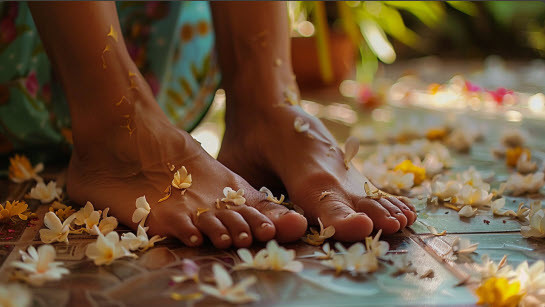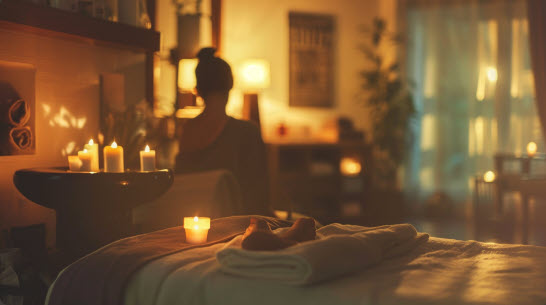You may have heard of reflexology before, but do you truly understand its benefits? This comprehensive guide will explore the intricate world of reflexology, a practice that involves applying pressure to specific points on the hands, feet, and ears to promote healing and relaxation.
Table of Contents
Reflexology is wonderful. It can help reduce stress, improve circulation, enhance energy levels, and alleviate pain, making it a popular alternative therapy for many individuals. Understanding the principles behind reflexology and its various benefits can empower you to make informed decisions about incorporating this ancient practice into your wellness routine.
Key Takeaways:
- Reflexology is a holistic therapy: Reflexology is a non-invasive complementary practice that involves applying pressure to specific points on the feet, hands, and ears to promote relaxation, improve circulation, and support overall well-being.
- Reflexology can help reduce stress and anxiety: By stimulating the nervous system and releasing endorphins, reflexology can help reduce stress levels, promote relaxation, and alleviate symptoms of anxiety.
- Reflexology may improve circulation and energy flow: By working on specific reflex points, reflexology can help enhance blood circulation, improve energy flow, and support the body’s natural healing processes.
- Reflexology may provide pain relief: Reflexology can help alleviate pain by triggering the release of endorphins, promoting relaxation, and reducing tension in the body. It may be beneficial for managing conditions such as migraines, back pain, and arthritis.
- Reflexology is safe and suitable for all ages: Reflexology is a gentle therapy that is generally safe for people of all ages, including children, pregnant women, and the elderly. It can be a relaxing and beneficial treatment option for various health concerns.
Understanding the Types of Reflexology
Understanding the different types of reflexology is important for anyone looking to benefit from this ancient practice. Various forms of reflexology focus on different parts of the body, each with its unique benefits and techniques.
Foot Reflexology
Foot reflexology focuses on applying pressure to specific points on the feet that correspond to different organs and systems in the body. By stimulating these points, foot reflexology can help improve circulation, promote relaxation, and relieve stress.
Hand Reflexology
Hand reflexology is based on the principle that there are reflex points on the hands that correspond to different parts of the body. A hand reflexology session involves applying pressure to these points to stimulate the body’s natural healing processes and promote overall well-being.
Ear Reflexology
Any reflexology enthusiast should not underestimate the power of ear reflexology. The ears are considered a microsystem of the entire body, with specific points that can be stimulated to address various health conditions.
The ear reflexology technique involves gentle pressure and massage on the reflex points of the ear, which can help alleviate pain, improve organ function, and enhance overall health.
Step-by-Step Guide to a Reflexology Session
| Preparing for Reflexology | The Reflexology Process |
|---|
Preparing for Reflexology
Assuming you have booked a reflexology session, it’s important to prepare yourself mentally and physically. Wear loose, comfortable clothing, and remove your shoes and socks before the session begins. Communicate any specific health issues or areas of concern with your reflexologist to ensure a tailored experience.
The Reflexology Process
Now, as the session begins, you will be comfortably seated in a reclining chair or lying down. The reflexologist will apply pressure to specific points on your feet, hands, or ears, corresponding to different organs and systems of the body. This stimulation is believed to promote relaxation, improve circulation, and support overall well-being.
Plus, it is vital to note that reflexology is a non-invasive treatment that should not cause pain. If you experience any discomfort during the session, be sure to communicate with your reflexologist immediately. While reflexology can offer numerous benefits, it is not recommended for pregnant women in their first trimester as it may induce contractions.
Factors Affecting Reflexology Outcomes
After undergoing reflexology sessions, various factors can influence the overall outcome and effectiveness of the treatment. Understanding these factors is crucial in maximizing the benefits of reflexology.
Practitioner Expertise
Clearly, the expertise of the reflexology practitioner plays a significant role in determining the success of the treatment. A skilled practitioner with extensive training and experience will be able to identify and address specific areas of concern more effectively, leading to better results for the client.
Client Health Status
A client’s health status can greatly impact the outcomes of reflexology. Clients with certain health conditions may experience varying degrees of improvement, and some individuals may be more responsive to the treatment than others. Both the practitioner and the client must be aware of any underlying health issues that could affect the results of reflexology.
Without this knowledge, it may be challenging to achieve the desired outcomes from the treatment. Therefore, it is important to discuss any health concerns or conditions with the reflexology practitioner before beginning the sessions. Assume that addressing these factors can lead to a more personalized and effective reflexology experience.
Tips for Optimizing Reflexology Benefits
Once again, to fully optimize the benefits of reflexology, here are some valuable tips to keep in mind:
- Consistency is key – try to schedule regular sessions to experience maximum benefits.
- Communicate openly with your reflexologist about any concerns or specific areas you’d like to focus on during the session.
- Stay hydrated before and after each reflexology session to help flush out toxins and improve circulation.
- Relax your mind and body during the session to enhance the effectiveness of the treatment.
Though reflexology offers numerous benefits, following these tips can help you make the most out of each session.
Frequency of Sessions
Tips: For optimal results, it is recommended to schedule reflexology sessions regularly. Depending on your individual needs and goals, weekly or bi-weekly sessions may be ideal. Be sure to listen to your body and adjust the frequency as needed to maintain balance and overall well-being.
Integrating Reflexology with Other Treatments
Sessions: To maximize the benefits of reflexology, consider integrating it with other complementary treatments such as massage therapy, acupuncture, or yoga. These modalities can work synergistically to provide holistic healing and address specific health concerns. Consult with your healthcare provider or a qualified holistic practitioner to create a personalized treatment plan that incorporates multiple modalities for optimal results.
Pros and Cons of Reflexology
Advantages of Reflexology
Now, let’s explore the numerous benefits of reflexology. This alternative therapy promotes relaxation, reduces stress, improves circulation, and helps the body restore its natural balance. Reflexology is known to relieve pain, boost energy levels, and enhance overall well-being. Additionally, regular sessions can stimulate nerve function, increase immunity, and promote better sleep patterns.
Potential Drawbacks and Considerations
For those considering reflexology, it is important to be aware of the potential drawbacks and considerations. While this holistic practice is generally safe for most people, it may not be suitable for individuals with certain medical conditions or during specific stages of pregnancy. This therapy is not intended to diagnose or cure illnesses and should not replace medical treatment. It is crucial to consult with a qualified reflexologist and inform them of any health concerns or conditions before undergoing a session.
This Alternative therapy has been shown to have minimal side effects, such as temporary discomfort or light-headedness after a session. However, individuals with certain health conditions like diabetes, epilepsy, or circulatory issues should proceed with caution and seek medical advice before starting reflexology.
Summing up
Ultimately, understanding reflexology and its benefits can greatly improve your overall well-being. By targeting pressure points on the feet, hands, and ears, reflexology can help alleviate a variety of ailments and promote relaxation and healing throughout the body. Learning more about this ancient practice and how it can positively impact different aspects of your health is key to unlocking its full potential. Consider incorporating reflexology into your self-care routine to experience its many benefits firsthand.
FAQ
Q: What is reflexology?
A: Reflexology is a practice that involves applying pressure to specific points on the feet, hands, and ears to promote relaxation, reduce stress, and improve overall well-being. These points are believed to correspond to different organs and systems in the body.
Q: How does reflexology work?
A: Reflexology works on the principle that there are reflex points on the feet, hands, and ears that are connected to different parts of the body. By applying pressure to these points, reflexologists believe they can stimulate the body’s natural healing process and improve overall health.
Q: What are the benefits of reflexology?
A: The benefits of reflexology include stress reduction, relaxation, improved circulation, pain relief, enhanced energy levels, and a strengthened immune system. It can also help with conditions such as migraines, insomnia, digestive issues, and hormonal imbalances.
Q: Is reflexology safe for everyone?
A: Reflexology is generally considered safe for most people, including pregnant women, children, and the elderly. However, it is important to consult with a qualified reflexologist if you have any existing health conditions or concerns. It is not recommended for individuals with certain medical conditions such as deep vein thrombosis or foot injuries.
Q: How often should someone get reflexology treatments?
A: The frequency of reflexology treatments can vary depending on individual needs and goals. Some people may benefit from weekly sessions to address specific health issues, while others may choose to have monthly sessions for maintenance and overall well-being. It is best to discuss your goals with a reflexologist to determine the appropriate treatment schedule for you.
If you need any further information or assistance with this article, don’t hesitate to Contact Us





















